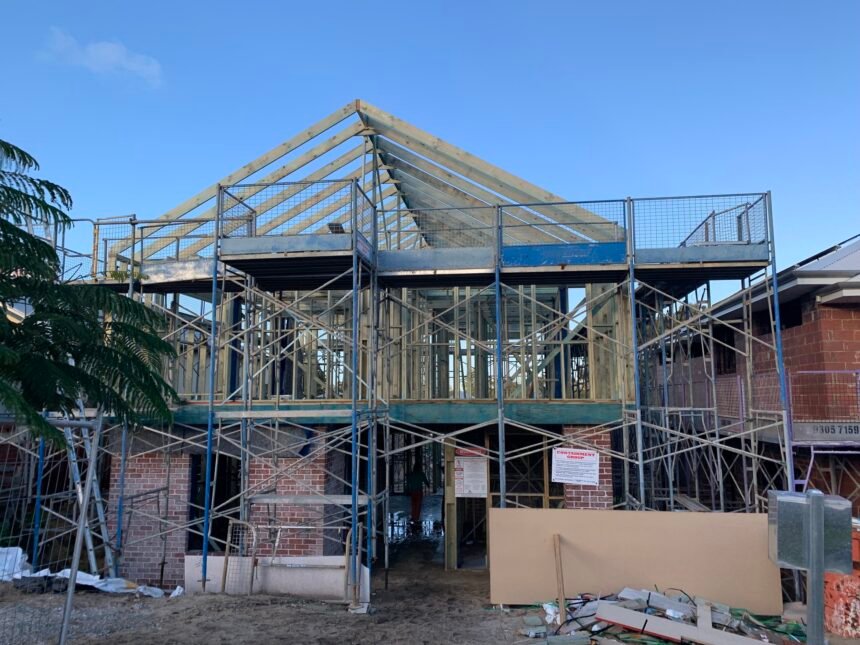Purchasing a home is one of the most significant financial commitments most people will make in their lifetime. In Perth, navigating the home finance landscape requires understanding various loan options, interest rates, government incentives, and the overall property market.
This comprehensive guide aims to provide prospective homebuyers and homeowners with valuable insights into home finance in Perth, helping them make informed decisions and achieve their property goals.
Explore Loan Options for Every Buyer
Home finance in Perth offers a variety of loan options to cater to different financial situations and preferences. Understanding these options is crucial for making an informed decision and securing the best possible terms for your home loan. Here, we delve deeper into the most common types of home loans available in Perth and how they can suit different needs.
Fixed-Rate Home Loans
A fixed-rate home loan is one where the interest rate is set for a specific period, typically ranging from one to five years. This type of loan offers the following advantages:
- Stability in Repayments: Borrowers benefit from predictable monthly repayments, which can simplify budgeting and financial planning.
- Protection from Rate Increases: Even if market interest rates rise, your loan’s interest rate remains unchanged during the fixed period, providing peace of mind.
However, fixed-rate loans may have limitations, such as:
- Limited Flexibility: There might be restrictions on making extra repayments or accessing redraw facilities.
- Potential for Higher Rates: If market rates fall, borrowers may miss out on lower interest rates until the fixed term expires.
Variable-Rate Home Loans
Variable-rate home loans have interest rates that can fluctuate based on changes in the market, particularly influenced by the Reserve Bank of Australia’s (RBA) cash rate. Key features include:
- Potential for Savings: When interest rates fall, borrowers can benefit from lower repayments.
- Flexibility: Often, variable-rate loans offer features such as redraw facilities, offset accounts, and the ability to make extra repayments without penalties.
The main drawback is the uncertainty in repayment amounts, as rates can increase, leading to higher monthly payments.
Split Home Loans
Split home loans combine the elements of fixed and variable-rate loans, offering a balance between stability and flexibility. Borrowers can divide their loan into fixed and variable portions, enjoying benefits such as:
- Partial Predictability: The fixed portion provides some stability in repayments.
- Potential Savings: The variable portion allows borrowers to take advantage of potential rate decreases and flexible loan features.
Interest-Only Loans
Interest-only loans allow borrowers to pay only the interest for a set period, usually up to five years. This type of loan is particularly appealing for:
- Lower Initial Repayments: Ideal for investors or buyers who anticipate a significant increase in income or property value in the near future.
- Investment Properties: Investors can maximize cash flow and potentially benefit from tax deductions on interest payments.
However, these loans result in higher repayments once the interest-only period ends, as the principal amount remains unchanged during that time.
Offset Account Loans
Offset account loans link a savings or transaction account to your home loan. The balance in the offset account reduces the interest charged on your home loan. Benefits include:
- Interest Savings: Every dollar in the offset account reduces the loan balance on which interest is calculated, potentially saving thousands in interest over the life of the loan.
- Flexible Access: Funds in the offset account remain accessible for withdrawals or transactions, providing financial flexibility.
Line of Credit Loans
A line of credit loan allows borrowers to access funds up to a predetermined credit limit, using their property as security. This type of loan is ideal for:
- Flexibility: Borrowers can draw and repay funds as needed, making it suitable for renovation projects or other expenses.
- Interest Efficiency: Interest is only charged on the amount drawn, not the entire credit limit.
However, disciplined financial management is essential to avoid accumulating high levels of debt.
Low-Deposit Home Loans
For first-time buyers or those with limited savings, low-deposit home loans provide an opportunity to enter the property market with a smaller initial outlay. These loans typically require lenders mortgage insurance (LMI) if the deposit is less than 20% of the property’s value. Benefits include:
- Accessibility: Enables buyers to purchase a home sooner rather than waiting to save a larger deposit.
- Government Support: Programs such as the First Home Loan Deposit Scheme (FHLDS) may assist eligible buyers in securing a low-deposit loan without paying LMI.
Non-Conforming Loans
Non-conforming loans cater to borrowers who may not meet the standard criteria for traditional home loans due to factors such as a poor credit history, irregular income, or self-employment. These loans offer:
- Accessibility: Provides financing options for those who might otherwise struggle to obtain a loan.
- Flexibility: Lenders may offer more lenient terms to accommodate unique financial situations.
However, non-conforming loans often come with higher interest rates and fees to offset the increased risk to the lender.
Choosing the Right Loan
Selecting the right home loan in Perth involves considering various factors to match your financial situation and goals:
- Financial Stability: Assess your current income, job security, and long-term financial outlook.
- Risk Tolerance: Determine your comfort level with potential interest rate fluctuations and repayment variability.
- Loan Features: Evaluate additional features such as offset accounts, redraw facilities, and the ability to make extra repayments.
- Future Plans: Consider your future plans, such as potential career changes, family expansion, or property investments, which may influence your loan choice.
The Home Buying Process in Perth
Step 1: Assess Your Financial Situation
Before embarking on the home buying journey, it’s crucial to evaluate your financial health. This includes understanding your savings, income, expenses, and existing debts. Using online calculators can help estimate your borrowing capacity and monthly repayments.
Step 2: Get Pre-Approval
Obtaining pre-approval from a lender provides a clear indication of how much you can borrow, giving you a budget to work within. It also shows sellers that you are a serious buyer, which can be advantageous in negotiations.
Step 3: Find the Right Property
Research the Perth property market to identify suitable areas and property types. Consider factors such as proximity to work, schools, amenities, and future growth potential. Engaging a real estate agent can provide valuable insights and streamline the search process.
Step 4: Make an Offer and Secure Financing
Once you find a property, make an offer subject to finance approval. If the offer is accepted, proceed with a formal loan application. The lender will conduct a property valuation and verify your financial details before granting final approval.
Step 5: Settlement and Moving In
Upon loan approval, the settlement process begins, involving legal and financial steps to transfer ownership. Once settled, you can move into your new home and start making regular mortgage repayments.
Government Incentives and Assistance
First Home Owner Grant (FHOG)
The Western Australian government offers the First Home Owner Grant to eligible first-time buyers purchasing or building a new home. As of 2024, the grant is $10,000, providing a significant boost to help cover initial costs.
Stamp Duty Concessions
First homebuyers in Perth may also benefit from stamp duty concessions, reducing the upfront costs associated with property purchases. The amount of the concession varies based on the property’s value and the buyer’s eligibility.
Keystart Home Loans
Keystart offers low-deposit home loans to eligible Western Australians, making homeownership more accessible. These loans are designed for those who may not meet the criteria of traditional lenders, offering an alternative pathway to owning a home.
Tips for Managing Your Home Loan
Regularly Review Your Loan
Interest rates and financial circumstances change over time. Regularly reviewing your home loan can help ensure you are still getting a competitive rate and taking advantage of beneficial features. Refinancing may be an option to secure a better deal.
Make Extra Repayments
If possible, making extra repayments can significantly reduce the total interest paid over the life of the loan and shorten the loan term. Check with your lender to ensure there are no penalties for additional payments.
Utilize Offset Accounts
Maximize the benefits of an offset account by keeping as much money as possible in the account. Every dollar in the offset account reduces the interest charged on your home loan, resulting in substantial savings.
Budget and Plan
Create a detailed budget that includes your mortgage repayments, living expenses, and savings goals. Planning for unexpected expenses and setting aside emergency funds can help manage financial stress.
Conclusion
Navigating the home finance landscape in Perth involves understanding the various loan options, government incentives, and market conditions. By assessing your financial situation, choosing the right loan, and taking advantage of available resources, you can make informed decisions and achieve your property goals. Whether you are a first-time buyer or looking to refinance, this comprehensive guide provides the essential information needed to embark on your homeownership journey with confidence.



